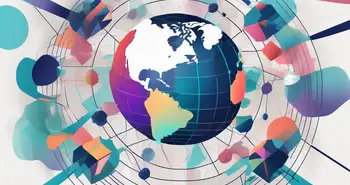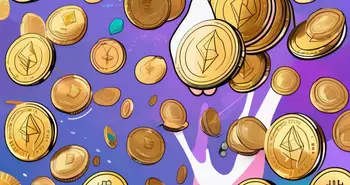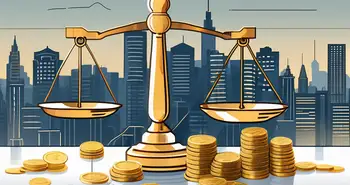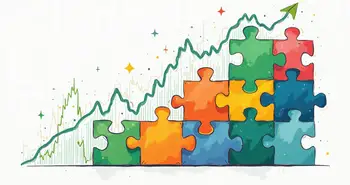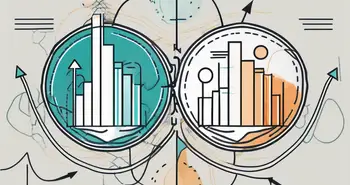Fractional NFTs: Making High-Value Digital Assets Accessible
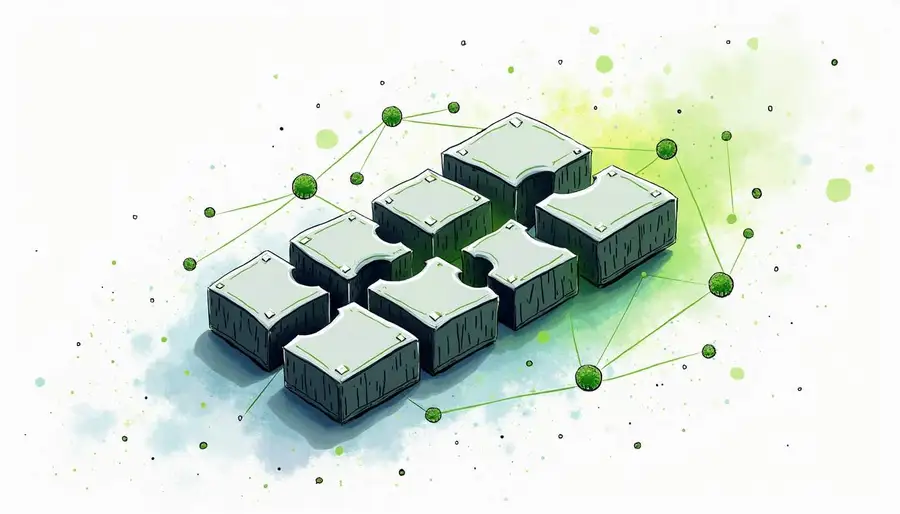
The world of digital assets has exploded in popularity, and at the forefront of this revolution are non-fungible tokens (NFTs). But what if you’ve always wanted to own a piece of a high-value digital asset, like a famous piece of digital art? This is where fractional NFTs come into play, allowing multiple individuals to share ownership of a single asset. Let’s dive into this innovative concept and uncover how it democratizes access to digital assets.
The Concept of Fractional Ownership and NFTs
Fractional NFTs represent a groundbreaking shift in how we perceive ownership. So, what does fractional ownership mean? Unlike traditional ownership, where one person holds the entire title, fractional ownership allows several people to own a portion of a larger asset.
What is Fractional Ownership?
Imagine you want to invest in a Van Gogh painting. A single piece may be worth millions, making it out of reach. However, through fractional ownership, you could purchase a small piece of it, say 1%. This not only lowers your investment barrier but also enables a broader audience to participate in the art market.
Fractional NFTs encapsulate the essence of this idea by using blockchain technology to divide the ownership of digital assets. Each NFT represents a precise portion, ensuring transparency and verifiable ownership among all holders. This democratization of asset ownership opens the door to a diverse range of investors, from art enthusiasts to everyday individuals looking to diversify their portfolios.
How Fractional NFTs Work?
Simply put, fractional NFTs operate on blockchain platforms like Ethereum. Here’s how it works: first, an NFT is minted for the high-value digital asset. Next, the asset is divided into smaller, fractional NFTs, each representing a share.
The ownership is traceable on the blockchain. This means that every time someone wants to buy or sell their fraction, the transaction is recorded transparently and securely. The smart contracts governing these NFTs automate the distribution of profits or royalties, making the whole process simple and efficient. Additionally, this system encourages liquidity in markets that were previously illiquid, allowing owners to easily trade their fractions without the cumbersome processes typically associated with traditional asset sales.
Moreover, fractional NFTs can extend beyond art into various sectors, including real estate, collectibles, and even music rights. For example, a rare collectible card can be tokenized, allowing fans to own a piece of history without needing to invest the full amount. This not only fosters a sense of community among collectors but also enhances the overall market dynamics by creating opportunities for collaborative ownership and investment strategies. As the technology continues to evolve, we may see even more innovative applications of fractional NFTs, reshaping how we think about ownership in the digital age.
The Benefits of Fractional NFTs
While fractional NFTs offer an exciting new frontier for digital asset investment, they are not without challenges. It's crucial for potential investors to be aware of these risks before diving into this innovative model.
Legal and Regulatory Concerns
As with any emerging technology, legal and regulatory challenges are always lurking. Fractional ownership can lead to complex legal entanglements regarding rights, responsibilities, and revenue sharing. Current legal frameworks may not adequately cover these new types of ownership, potentially leading to disputes. Investors should stay informed about any developments in regulations that might impact the ownership and trading of fractional NFTs, as compliance will be crucial in ensuring the sustainability of this market.
Security and Fraud Risks
Another significant concern is security. While blockchain technology is generally secure, the platforms where fractional NFTs are traded can still be vulnerable to hacking or fraud. It’s essential for investors to utilize reputable platforms and ensure their digital wallets are secure. Conducting thorough research on the provenance of the NFT and verifying that the platform has transparent processes for ownership transfers is vital in mitigating these risks.
A Better Alternative: Morpher's NFT Markets
Given these challenges, many investors may seek safer and more straightforward options for entering the NFT space. Morpher offers a compelling alternative by allowing you to invest in the price movement of entire NFT collections rather than navigating the complexities of fractional ownership.
Each NFT market on Morpher represents a complete collection, often containing thousands of individual artworks. This structure enables you to capitalize on the overall appreciation of popular collections, such as the Bored Ape Yacht Club, without the high cost associated with purchasing individual pieces.
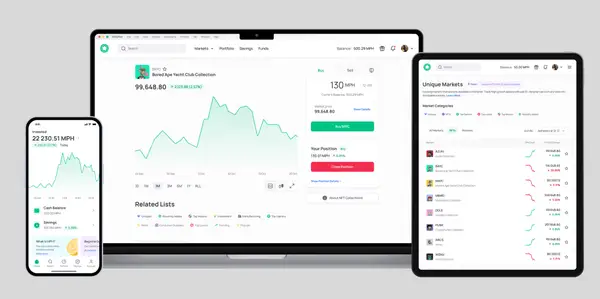
Moreover, Morpher's model allows you to enjoy lower barriers to entry, meaning you can invest in high-value digital assets without the significant capital typically required. With advanced trading tools, real-time market insights, and the ability to diversify your investments across various collections, Morpher simplifies the process of participating in the NFT market while minimizing the risks associated with fractional ownership. Try Morpher now!
The Role of Blockchain in Fractional NFTs
Blockchain technology acts as the backbone of fractional NFTs, delivering unique advantages that are hard to replicate.
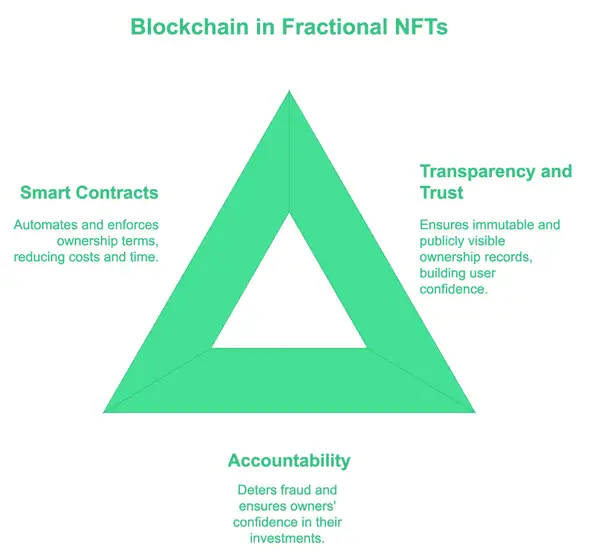
Ensuring Transparency and Trust
The decentralized nature of blockchain ensures that ownership records are immutable and transparent. This builds trust among users, as each transaction is publicly visible, making it difficult for anyone to manipulate ownership histories.
This transparency also promotes greater accountability, deterring fraudulent activity and ensuring that owners have confidence in their investments.
Facilitating Fractional Ownership
Moreover, blockchain simplifies the process of fractional ownership with smart contracts. These self-executing contracts automatically enforce the terms of ownership and transactions without the need for intermediaries, saving time and reducing costs. For example, if the underlying asset generates royalties, the royalties can be distributed automatically to each fractional owner based on their share.
The Future of Fractional NFTs
As we look ahead, the landscape for fractional NFTs is lined with potential and exciting opportunities.
Market Predictions and Trends
Experts predict a significant rise in the adoption of fractional NFTs as more platforms and creators embrace this model. The lower barriers to entry for investors will likely lead to a surge in new projects, thereby increasing overall market liquidity. As communities rally together to invest in art, music, and other forms of digital culture, we could see a renaissance of artistic expression and collaboration driven by fractional ownership.
Impact on Digital Art and Collectibles Market
Fractional NFTs might redefine the way we perceive digital art and collectibles. Artists may feel encouraged to create high-value unique pieces knowing they have a way to share ownership with their fans. This could lead to a thriving ecosystem where the artists not only benefit from sales but also generate ongoing revenue from their work through royalties.
The potential for innovative collaborations and partnerships is immense, opening pathways for a more vibrant and inclusive digital asset market.
FAQ
- What are fractional NFTs?
Fractional NFTs are digital ownership shares of a larger NFT, allowing multiple people to own a fraction of a high-value asset.
- How do fractional NFTs work?
They work by minting a single NFT, which is then divided into several fractional NFTs on the blockchain, making ownership transparent and traceable.
- What are the benefits of fractional NFTs?
Fractional NFTs provide accessibility to high-value assets, democratize the NFT market, and create opportunities for collective investment.
- What risks are associated with fractional NFTs?
Potential risks include legal and regulatory concerns, as well as security and fraud risks regarding the platforms where they are traded.
- What role does blockchain play in fractional NFTs?
Blockchain ensures transparency and trust through immutable records and facilitates the fractional ownership process through smart contracts.
Ready to explore the world of NFTs and expand your investment horizons? Morpher.com is your gateway to trading high-value digital assets with ease and flexibility. With no fees and infinite liquidity, Morpher empowers you to invest in entire NFT collections, giving you exposure to the best digital artworks available. Experience the security and control of the Morpher Wallet, leverage your trades up to 10x, and discover unique markets like NFTs—all on a platform built on the Ethereum Blockchain for an innovative trading experience. Sign up today and receive your free sign-up bonus!

Disclaimer: All investments involve risk, and the past performance of a security, industry, sector, market, financial product, trading strategy, or individual’s trading does not guarantee future results or returns. Investors are fully responsible for any investment decisions they make. Such decisions should be based solely on an evaluation of their financial circumstances, investment objectives, risk tolerance, and liquidity needs. This post does not constitute investment advice.

Painless trading for everyone
Hundreds of markets all in one place - Apple, Bitcoin, Gold, Watches, NFTs, Sneakers and so much more.

Painless trading for everyone
Hundreds of markets all in one place - Apple, Bitcoin, Gold, Watches, NFTs, Sneakers and so much more.

